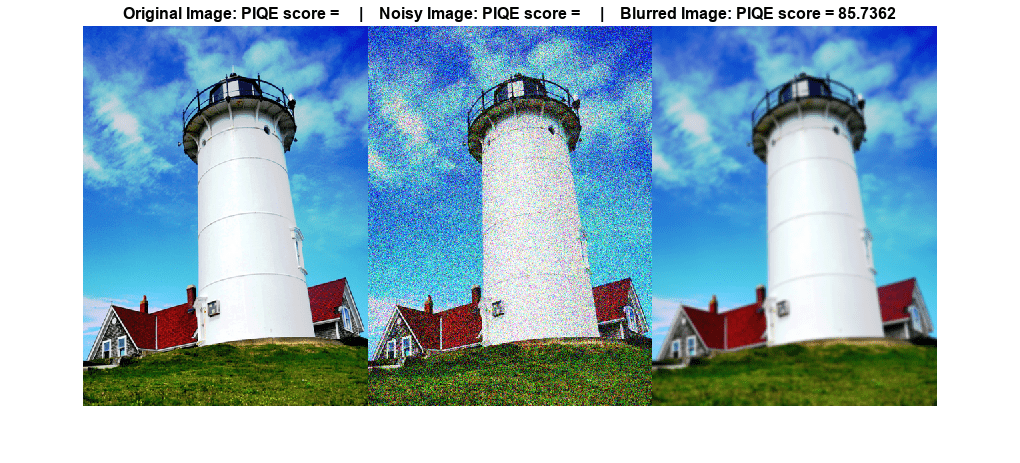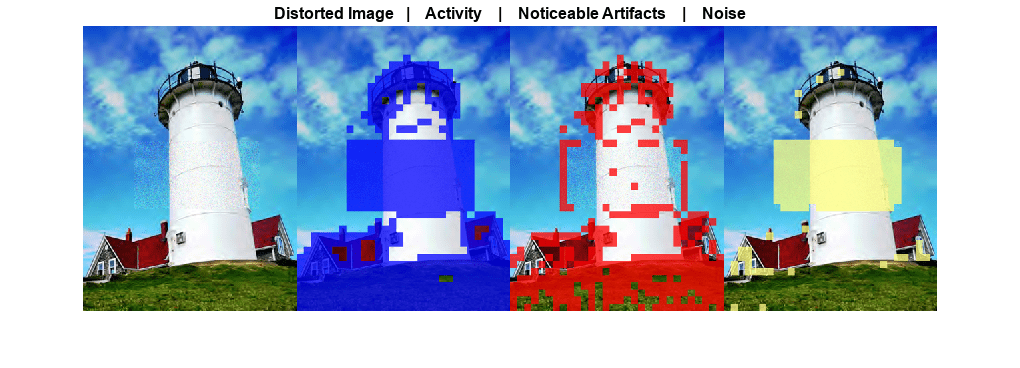piqe
Perception based Image Quality Evaluator (PIQE) no-reference image quality score
Description
[
also returns the spatial quality masks computed from the input image.score,activityMask,artifactsMask,noiseMask] = piqe(A)
Examples
Input Arguments
Output Arguments
Algorithms
PIQE calculates the no-reference quality score for an image through
block-wise distortion estimation, using these steps:
Compute the Mean Subtracted Contrast Normalized (MSCN) coefficient for each pixel in the image using the algorithm proposed by N. Venkatanath and others [1].
Divide the input image into nonoverlapping blocks of size 16-by-16.
Identify high spatially active blocks based on the variance of the MSCN coefficients.
Generate
activityMaskusing the identified high spatially active blocks.In each block, evaluate distortion due to blocking artifacts and noise using the MSCN coefficients.
Use threshold criteria to classify the blocks as distorted blocks with blocking artifacts, distorted blocks with Gaussian noise, and undistorted blocks.
Generate
noticeableArtifactsMaskfrom the distorted blocks with blocking artifacts andnoiseMaskfrom the distorted blocks with Gaussian noise.Compute the PIQE score for the input image as the mean of scores in the distorted blocks.
The quality scale of the image based on its PIQE score is given in this table. The quality scale and respective score range are assigned through experimental analysis on the dataset in LIVE Image Quality Assessment Database Release 2 [2].
| Quality Scale | Score Range |
| Excellent | [0, 20] |
| Good | [21, 35] |
| Fair | [36, 50] |
| Poor | [51, 80] |
| Bad | [81, 100] |
References
[1]
[2]
Version History
Introduced in R2018b

